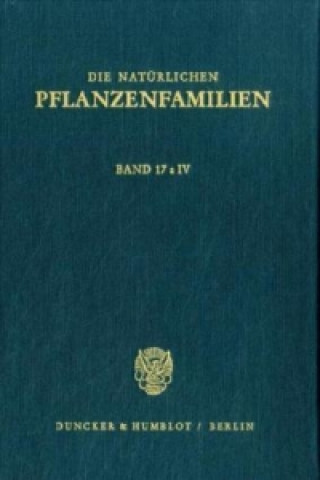
Kód: 01498876
Die natürlichen Pflanzenfamilien nebst ihren Gattungen und wichtigsten Arten, insbesondere den Nutzpflanzen.
Autor Adolf Engler, Karl Prantl, Paul Hiepko
The second volume of "Die natürlichen Pflanzenfamilien" is presented now in the new format: the book contains an extensive General Part including contributions of different authors specializing in various fields of botany and it i ... celý popis
- Jazyk:
 Němčina
Němčina - Vazba: Pevná
- Počet stran: 555
Nakladatelství: Duncker & Humblot, 1995
- Více informací o knize

4713 Kč
Dostupnost:
50 % šance Máme informaci, že by titul mohl být dostupný. Na základě vaší objednávky se ho pokusíme do 6 týdnů zajistit.
Máme informaci, že by titul mohl být dostupný. Na základě vaší objednávky se ho pokusíme do 6 týdnů zajistit.Prohledáme celý svět
Mohlo by se vám také líbit
-

Stockmann
353 Kč -

Freud: A Guide for the Perplexed
1056 Kč -

Policing the Crisis
1852 Kč
Darujte tuto knihu ještě dnes
- Objednejte knihu a zvolte Zaslat jako dárek.
- Obratem obdržíte darovací poukaz na knihu, který můžete ihned předat obdarovanému.
- Knihu zašleme na adresu obdarovaného, o nic se nestaráte.
Informovat o naskladnění knihy
Zadejte do formuláře e-mailovou adresu a jakmile knihu naskladníme, zašleme vám o tom zprávu. Pohlídáme vše za vás.
Více informací o knize Die natürlichen Pflanzenfamilien nebst ihren Gattungen und wichtigsten Arten, insbesondere den Nutzpflanzen.
Nákupem získáte 471 bodů
 Anotace knihy
Anotace knihy
The second volume of "Die natürlichen Pflanzenfamilien" is presented now in the new format: the book contains an extensive General Part including contributions of different authors specializing in various fields of botany and it is written mainly in English. The first volume of this kind on the family Loganiaceae was published in 1980.§The Ranunculaceae is a moderately large family with 59 genera and ca. 2500 species. Many of these have beautiful flowers or substances with strong physiological activity. They are used as ornamental or medicinal plants. This family shows great diversity in both vegetative and reproductive structures as well as in ecology. It retains many primitive characters and is regarded as one of the most primitive angiospermous families, but on the other hand it often presents quite specialized or advanced features. Therefore the family has attracted attention of many botanists from various points of view, and its members have been studied not only taxonomically, but also morphologically, anatomically, embryologically, palynologically, cytologically, phytochemically, serologically, and so on. Thus the Ranunculaceae are indeed an intensively studied family. The main author of this book, M. Tamura has been studying the family taxonomically for more than 40 years.§In the history of the taxonomic studies of the Ranunculaceae, there were three monumental works. The first is that of A. P. De Candolle. In the first volume of his "Systema Naturale" (1817) the family has been monographed at the species level for the first time. His work was excellent and gave a sound base to the taxonomy of the family and influenced the subsequent work for a long time. The second monograph at the generic level is that of K. Prantl (1888) which appeared in "Die natürlichen Pflanzenfamilien". This author used anatomical and embryological characters, in addition to traditional morphological ones for the classification of the family, and tried to make a phylogenetic sys
 Parametry knihy
Parametry knihy
Zařazení knihy Knihy v němčině Naturwissenschaften, Medizin, Informatik, Technik Biologie Biologie - Allgemeines
4713 Kč
- Plný název: Die natürlichen Pflanzenfamilien nebst ihren Gattungen und wichtigsten Arten, insbesondere den Nutzpflanzen.
- Podnázev: Unter Mitwirkung zahlreicher hervorragender Fachgelehrter begr. von A. Engler / K. Prantl. Bd. 17a IV: ANGIOSPERMAE: Ordnung Ranunculales, Fam. Ranunculaceae.
- Autor: Adolf Engler, Karl Prantl, Paul Hiepko
- Jazyk:
 Němčina
Němčina - Vazba: Pevná
- Počet stran: 555
- EAN: 9783428079803
- ID: 01498876
- Nakladatelství: Duncker & Humblot
- Hmotnost: 1190 g
- Rozměry: 245 × 179 × 31 mm
- Rok vydání: 1995
Oblíbené z jiného soudku
-

Why We Die
462 Kč -

Livewired
306 Kč -

Survival of the Friendliest
303 Kč -

We Are Electric
462 Kč -

Insect Crisis
306 Kč -

Das große Kosmos-Buch der Mikroskopie
982 Kč -

Idea of the Brain
361 Kč -

Sacred Nature
316 Kč -

Under a White Sky
276 Kč -

Testosterone
449 Kč -

Das Gehirn
894 Kč -

Animal Vegetable Criminal
464 Kč -
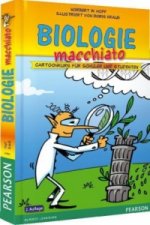
Biologie macchiato
506 Kč -

Hidden Universe
367 Kč -

FANTASTISCHE PILZE - Die magische Welt zu unseren Füßen
561 Kč -

Das Gender-Paradoxon
595 Kč -

Viral
638 Kč -

Das Mysterium der Tiere
324 Kč -

Different
306 Kč -

Viral
463 Kč -
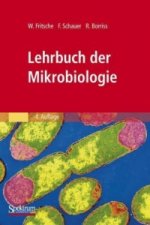
Lehrbuch der Mikrobiologie
1072 Kč -
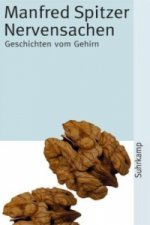
Nervensachen
296 Kč -
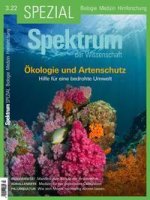
Spektrum Spezial - Ökologie und Artenschutz
246 Kč -

Die Abstammung des Menschen
466 Kč -

Wie der Mensch die Welt eroberte, m. DVD
935 Kč -

Evolution 3.0
523 Kč -

Die Lehre vom fossilen Menschen, 2 Audio-CDs
595 Kč -

Wissenschaftstheoretische Probleme der modernen Biologie.
1851 Kč -

Hurricane Lizards and Plastic Squid
306 Kč -
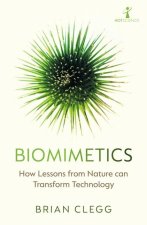
Biomimetics
306 Kč -
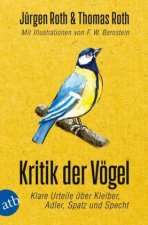
Kritik der Vögel
324 Kč -
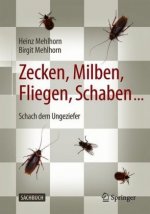
Zecken, Milben, Fliegen, Schaben ...
702 Kč -

Das Grüne Dach Europas
454 Kč -
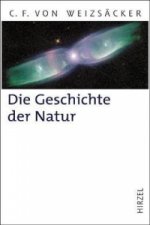
Die Geschichte der Natur
736 Kč -

Das Varieté der Pflanzen
869 Kč -

Wolfsküsse
280 Kč -

Federnlesen
631 Kč -

Evolutionäre Anthropologie zur Einführung
363 Kč -

Anleitung zum Ausstopfen der Vögel und Säugetiere
709 Kč -
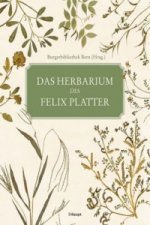
Das Herbarium des Felix Platter
365 Kč -
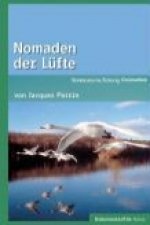
Nomaden der Luefte
561 Kč -

Der siebte Sinn der Tiere
342 Kč -

Animal Vegetable Criminal
286 Kč -
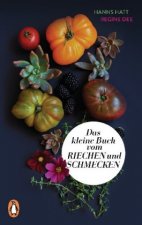
Das kleine Buch vom Riechen und Schmecken
377 Kč -

Die Psycho-Trojaner
528 Kč -

Die Zeugung
2700 Kč -

Gewalt und Mitgefühl
939 Kč -

Verantwortliches Konsumentenverhalten.
3669 Kč -

Auf Schwingen um die Welt
588 Kč
Osobní odběr Praha, Brno a 12903 dalších
Copyright ©2008-24 nejlevnejsi-knihy.cz Všechna práva vyhrazenaSoukromíCookies


 Vrácení do měsíce
Vrácení do měsíce 571 999 099 (8-15.30h)
571 999 099 (8-15.30h)